Trending
Opinion: How will Project 2025 impact game developers?
The Heritage Foundation's manifesto for the possible next administration could do great harm to many, including large portions of the game development community.

Featured Blog | This community-written post highlights the best of what the game industry has to offer. Read more like it on the Game Developer Blogs or learn how to Submit Your Own Blog Post
For the last year and a half, the team behind Bury me, my Love have been working on this reality-inspired game about a Syrian migrant's journey to Europe. Florent Maurin, the project's creative director, tells all the steps to a very intense 18 months.

18 months ago, we started working on the production of our first independent video game, Bury me, my Love. If you haven’t heard of it, it’s a text-message based interactive fiction that tells the story of Nour, a Syrian woman who decides to leave her war-torn country. She wants to reach Germany, and she has to make this dangerous journey alone as her husband Majd cannot come with her. You play as Majd (even though he, as a character, has his own personality), and you have to provide Nour with advice and support, all this through text messages, selfies and emojis only. This is what I call a reality-inspired game, a fiction directly derived from real events – and, in this case, from interfaces we’re used to using.
Bury me, my Love’s production was sometimes easy, sometimes a complete mess. We made mistakes, overlooked things, and learned a lot. So I figured I’d share our experience, as it might be useful to others – keep in mind it was our first project as indie devs.
There’s just one thing you should know before I start. In the game, almost every decision you make may have an impact on one (or more) of the three variables that define Nour’s state: her romantic relationship with Majd, her money and her morale. For this piece, I’ll leave money and love out of the equation (they could be the subject of two separate articles) and focus on morale only. Let’s say I start with a good 60 morale points - as Nour does in the game. Here we go.
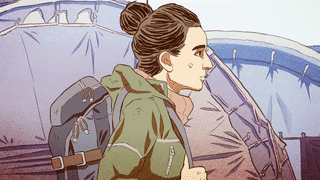
After reading a very touching article in Le Monde (The Journey of a Syrian Migrant as told by her WhatsApp conversations), I decide to make a game about how migrants communicate with their loved ones when they’re on the road. But obviously, I won’t be able to tackle such a delicate topic without getting help from people who know the situation very well. So I get in touch with Le Monde’s journalist, Lucie Soullier. Lucie is not at all familiar with video games, but after I explain what I have in mind in detail she agrees to introduce me (via WhatsApp) to Dana, the Syrian woman from the article. Dana is immediately enthusiastic: she thinks a game could be a great medium to tell the stories of people like her. Lucie and Dana accept to be part of our editorial team, and I feel that with their help we’ll be able to write a believable story.
~morale = morale+5
I get in touch with people I know to ask them whether they’d like to join in. Pierre Corbinais’ a great writer, he knows how to write dialogs that feel genuine and he’s a former journalist, which is important for this game’s topic. Paul Joannon’s got XP in game development and worked at French newspaper Libération until he decided to quit, quite recently. For the interface design, I’d like to find people who worked on apps before in order to get a WhatsApp look, and I know just the right team for that: Figs. And the artist, Matthieu Godet, has worked with Paul before, which is definitely a good thing.
To my delight, everybody likes the project and wants to be a part of it. Even better: Figs are OK to co-produce it!
~morale = morale+5
Figs and TPH have some money to invest in the game, but that won’t be enough, so I have to find more elsewhere. There’s this thing in France, the Centre National du Cinéma’s Fonds d’Aide au Jeu Vidéo (Video Games Help Fund). It gives grants to innovative projects, so we apply. The required presentation is a good opportunity to have a clearer project: we define the story, the game design, the tools we’ll be using, make a budget & market analysis... But I have to finish the application during a weekend that I had planned to spend with old friends. As I struggle with a weak Internet connection I hear them eating homemade burgers and drinking cold beers without me. Worth it, but still a bit sad.
~morale = morale-1
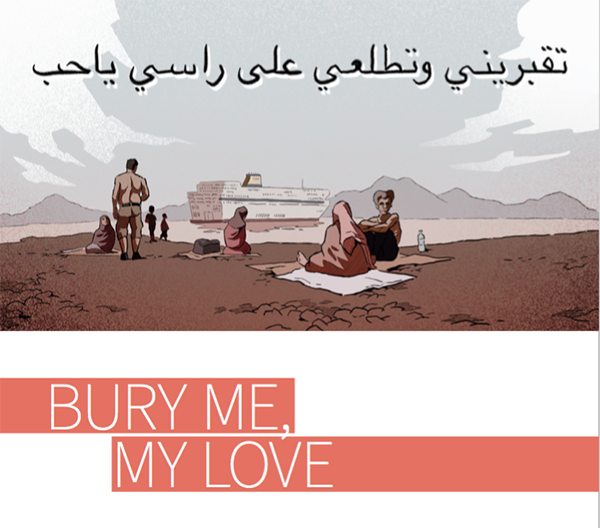
The cover to our very first presentation of the game
Since June, Pierre and I have been gathering documentation and reading a lot of testimonies by migrants who undertook the journey between Syria and Europe. I had read things on the subject before, but digging into it makes me realize how bad the situation is. This is intense, and it also makes me question my position in the project. As a healthy European, living a fairly comfortable life, is it really my place to make this game?
That’s the thing with reality-inspired games: they basically require you to talk about other people’s lives. But as a former journalist, I’m familiar with the process. I’ve learned the importance of finding the right distance with your subject. We’re not superheroes with capes, we don’t have the pretension to come to the rescue and save migrants from a gloomy fate. Nor are we an NGO with an activist’s agenda. We just want to tell those stories in the form of a video game, for players to acknowledge them and what they say about the world we live in.
As neither Pierre nor I are Syrian refugees, Nour and Majd’s story is going to be a fiction. But to work as a reality-inspired game, it needs to be as truthful and believable as possible. There’s a lot of work ahead to achieve that.
~morale = morale-3
We got money from the French CNC! They seem to have liked the project and decided to help us. That’s a good thing because now I know we’ve got enough money to make Bury me, my Love happen. Of course we’re on a tight budget, and we may have to cut out some of the features we’d like to have during the development process, but still. And now that we’ve got the CNC’s support, we might be able to convince other partners to join in. I immediately think about ARTE, the European TV Channel. They’ve been investing in games recently, and BMML seems like a perfect fit for them, so I send them the project.
~morale = morale+4
I have a series of WhatsApp chats with Dana. The things she went through, both before living Syria and during her journey, are really chilling. Yet, she never complains. She just states the facts and how she faced them. I’m really impressed by her, and I start writing Nour as a character with her in mind. I also ask Dana about how life in Germany is. “The people here are really great”, she tells me, “they treat me nicely. But I’ll never be fully happy, until I know my mother is safe.” Her mother still lives in Syria.
~morale = morale-4
Both Pierre and I start writing the game. First, we make a map of all the main routes migrants may take between Syria and Europe. We’d like to give players the possibility to explore both the northern (Turkey -> Greece -> western Europe) and southern (Egypt -> Libya -> Italy) routes, but we soon realize that would be too huge a task. So we stick with around 50 locations that appear to be the most visited ones (the northern route, mainly), and trace the actual paths that link them together. This mapping is going to be our guide for the whole writing period. There’s a slight feeling of incompletion to it, though, as I’d really love to use all the material we gathered and tell as many stories as possible.
~morale = morale-2
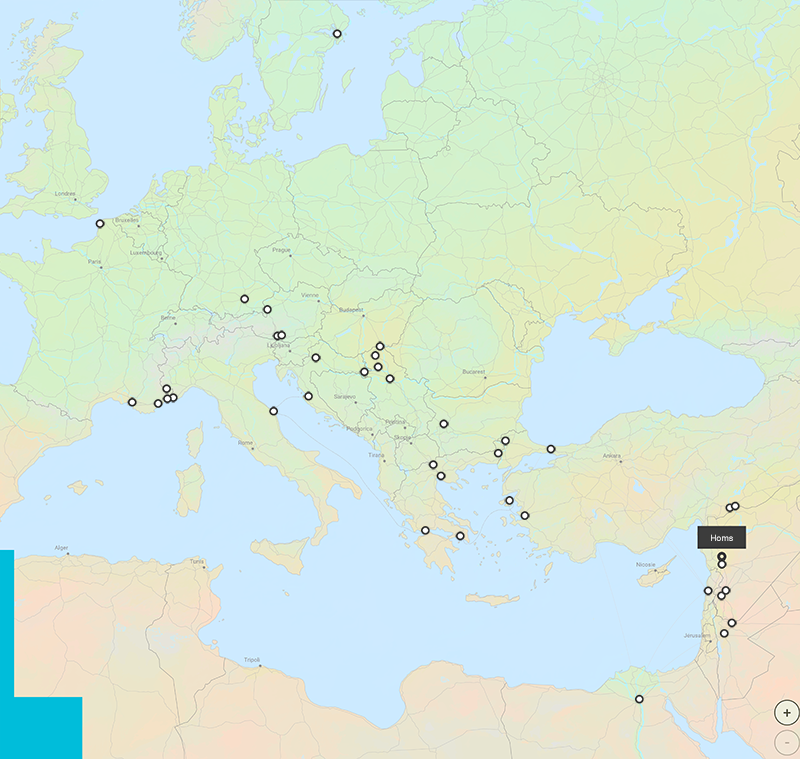
In a typical playthrough, you'll only see 15 to 20 of those places.
Paul, our main developer, is a huge open source fan, and he convinces me that using Unity (like everyone does) might, in the long run, do more harm than good to the ecosystem – after all, having one big player in a monopolistic position is never a good thing. So we review the open source cross-platform engines that are available and finally pick MonoGame. This will make the project slightly more complicated, we’re aware of that, but we take pride in staying true to our convictions (this will prove 100% foolish, as you’ll discover later J). Thanks to the awesome folks at Inkle, we opt for Ink as an open source scripting language, and even our git client is open. How cool is that?
~morale = morale+2
Development starts. We’re officially MAKING A GAME!!! Let’s try our best.
~morale = morale+5
We’ve got an early prototype! There’s just a fraction of the content in it, and it only has the core features (messages and images display + phone notifications), but it works! The feeling is amazing, and this really confirms my intuition that text-message based storytelling is something quite powerful. I already feel like I’m talking to Nour.
~morale = morale+5
We get two setbacks in a row. The first one comes from publisher Devolver. We contacted them because we thought they might be crazy enough to publish BMML. We were wrong. Then again, our hopes weren’t that high.
A bigger blow comes from ARTE, though. Since we had sent them the project, I grew pretty confident that they’d be interested in it, and willing to start a coproduction. This would be super cool, of course, as we run on a very tight budget, even with the FAJV grant. Think about all we could do with more money! Sadly, most of the folks at ARTE don’t seem to be convinced. It’s not a blunt “no”, but… it’s not very far from it. They’ve got their doubts about our ability to find the right distance to the topic at stake. I think we’re able to do this Right, but quickly run out of arguments. So as a last resort, I ask the ARTE team to test our prototype during the holidays – but I have the feeling it won’t make a significant difference…
~morale = morale-6

Sure, there's bumps in the road, but until now, morale is good
…and I was so very mistaken! In the first days of 2017, I get a call from ARTE. They played the prototype, they really liked it and all their editorial doubts vanished! I had been told before that having a prototype was important, but I did not realize how true that was. Yet the cat’s not in the bag: they still have to undergo a complicated, multi-step internal validation process, and things could still very much go sideways. So let’s hold our horses there.
~morale = morale+5
A woman I’m in contact with for the project invites me to come have a look where she works. She’s volunteering at the migrants’ orientation center in La Chapelle, northern Paris. The situation is complicated, to say the least. There’s far more applicants that there is room, people queue to get food or clothes, fleas are a real issue and the general mood is quite tense. In the past few days, there have been fights, and some dudes even ripped small trees off to use them as clubs!
I realize something important during this visit. The fact is, migrants are held to a very high standard. They have lost everything, risked their lives, may not ever see their families again… and yet they are requested to stay calm as they sleep in the streets, waiting for a hypothetical place to settle. There’s something deeply disturbing to that.
~morale = morale-5
All is well production wise. We’re a bit behind schedule, but then again, who isn’t, and the art Matthieu makes really looks like a perfect fit to the project. On top of that, a fellow indie dev tells me about a private community that gathers the heads of small game studios. He presents it as a place full of cool people, a great way to share experience and get very good advice… I could definitely use that! So I join in, and almost immediately feel at home. Sure, there’s only a fraction of the indie game scene there, but there’s very positive vibes, the discussions are full of great takeaways and most importantly, I feel I’m really part of a community. This is great! Oh, and being part of this group will basically save the project’s life in a few months, but I’m not aware of that yet.
~morale = morale+4
Bad news in the mail: we’re not selected at AMAZE. This is a bummer because 1) AMAZE is kind of THE place where “different” video games belong, 2) I really LOVE this festival and 3) we did not even manage to get an “honorable mention”. I know, I know, this happens to A LOT of great games… but that doesn't make it any easier to process. For the first time in the project’s life, I have a doubt. What if BMML wasn't such a good idea? What if people found it tasteless, or even worse, simply did not see the point?
Well, it’s too late to turn back now anyway, I tell myself. But this is going to keep me up at night a bit.
~morale = morale-3
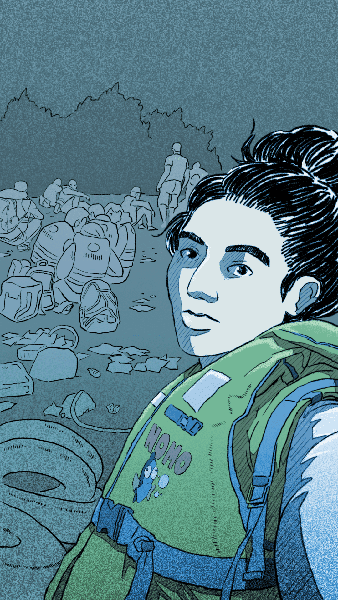
We now have a really decent prototype, with more features coded and around 20% of the game’s content integrated. The interface designed by Figs is really neat, and the story flow feels good. Time to have Dana play it. We send her an .apk, and anxiously wait for her feedback over WhatsApp… And it’s very positive! She tells us she loved it. She played with her sister, who went full emotional and did not want to let Nour go at the end of the demo. This reaction is such a relief to me. It was very important to have Dana’s approval. I am aware she doesn’t account for every Syrian migrant there is, but she trusted us and helped us, and we really wanted to live up to this trust. So far, that seems to be the case!
~morale = morale+5
Another month, another rejection. This time, it’s from the great guys at Raw Fury. They were clearly interested in the game, but as they don’t do mobile-only projects, they had to pass. A shame, though, because I think working with them could have been really cool. Maybe next time! ~morale = morale-2
Being signed up for selection at AMAZE at least had a positive consequence: Chris Priestman gets in touch with us. This is really cool, because he’s a games journalist I love to read. We have a chat over email, and he writes this great piece on Waypoint. That’s BMML’s first press coverage, and it is not a small one! A few days later, I bump into a piece by Colin Campbell on Polygon, about a game that shares similarities with BMML. So I decide to go for it and @ him on Twitter… and he responds! A couple weeks & emails later, we’re on Polygon.
I guess the lesson here is: don’t be afraid to reach out to games journalists whose work you appreciate. Of course we know that press coverage is of the essence, so we’re basically through the roof!
~morale = morale+4
A quick selection of question Dana answered via WhatsApp over the course of the last few weeks:
Do young Syrians send each other sexy pics?
If you get random checked by soldiers around Aleppo, what do you do?
Have you ever heard of the Road Runner and Wile E. Coyote?
What are some typical jokes you told your sister when you were 8 years old?
Could someone who’s religious and someone who’s absolutely not marry each other?
How do you say “Grandpa” in Syrian?
How exactly does a border check look and feel like?
Some of them made her laugh, some made her relive complicated moments, and some left her quite puzzled! For us, she’s always a very precious help.
~morale = morale+3
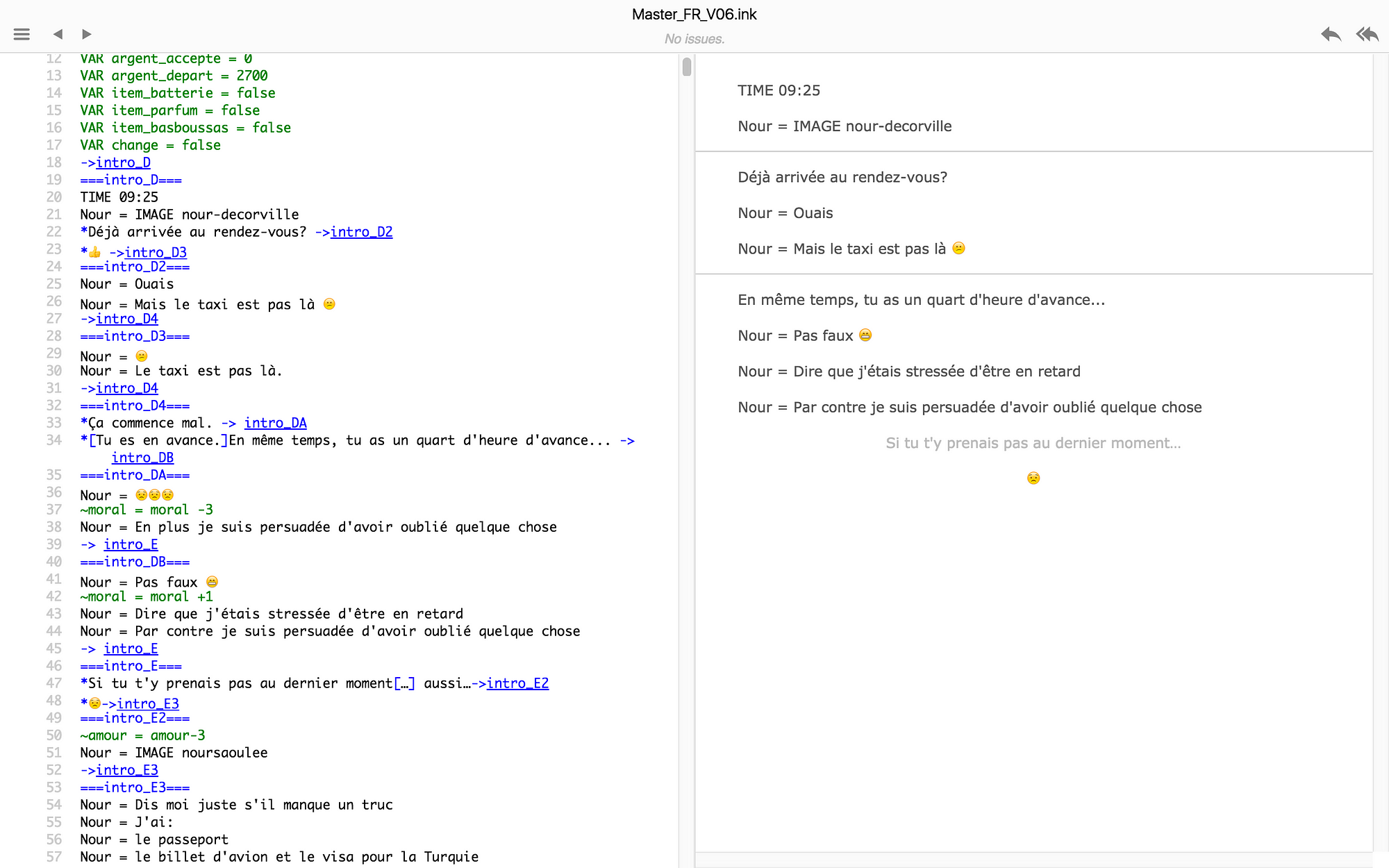
Using Ink is great, because you can preview your branching narrative.
Writing is finally OVER! We’ve got 110k words of text (that’s A LOT), and I think it’s pretty good… But who am I to say? So we ask both Dana and Lucie from Le Monde to read it all and give us their most honest feedback… In the upcoming weeks, we’re going to tweak and rewrite passages according to their input, to be as believable as possible.
I still remember this scene where Nour meets a smuggler: we had to tear it down and rebuild it up from scratch because Dana was positive it wasn’t scary enough!
In other news, the EN localization is about to begin, and it’s none too soon, because our initial plan is to be out by the end of June. Also we manage to attend AMAZE anyway, in the Open Screens category. It’s the first time we show BMML to the public, and the feedback is very positive. Also, we welcome Audrey in the team as a PR intern.
~morale = morale+3
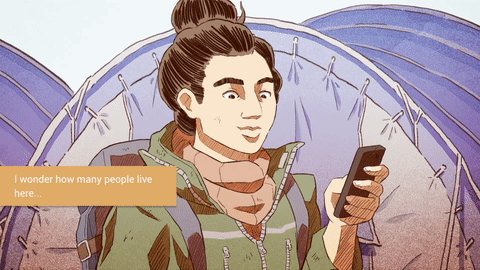
A remarkably quiet month. I spend ages integrating the game’s text and pictures and fixing all the broken links between story passages (thanks god for Nils Frahm, I listen to this concert on repeat), which is a real pain. But on the positive side of thinks, ARTE’s finally on board! We’re going to be able to afford translating the game in 5 languages (which would definitely be useful to get a featuring from Apple), add some features, spend more time polishing the game… Plus we’re getting very useful feedback from people who still have a fresh eye, like Marie and Adrien. We’ve been knee-deep in BMML for almost a year, we don’t see things clearly anymore. The folks at ARTE, on the other hand, are not as attached to the project as we are. They won’t hesitate to be sharp in their feedback and critics, which is healthy and useful.
~morale = morale+2
Everything is going according to plan… more or less. Localization in EN is almost done and we found cool people to translate the game in German (ARTE being involved in the project, this is mandatory), Spanish and Italian. I wish we had a version in Arabic but that’s technically more complicated to make so we’ll have to postpone it until after the game is out (and, hopefully, financially successful enough).
We also have a final validation by Dana, and very positive feedback from both the playtests we run and the people who play the game at Game Happens and Indigo, where BMML has been selected.
And on top of that, we found a publisher! The team at Playdius enjoyed the game and are willing to help us have it out. Good to have them on board.
Still, the end of June is there pretty fast and I can’t help but feel worried. According to our initial schedule, we should be finished by now – yet we’re obviously still quite far from being there. Of course, there are reasons for that. With ARTE now on the loop, the project got more ambitious, and this doesn’t go without some extra work. And then again, who has ever heard of a video game that was delivered on time? Still, I don’t like the feeling I get. We’re close, but not quite there yet – let’s not forget that.
~morale = morale-1
Since the beginning of the project, I wanted each of the game’s 19 endings to be an audio message from Nour. That would be the first - and last - time the player would hear the character’s actual voice, and I thought that could be interesting. Casting Nour’s voice was a strange process, as I never actually had thought about how she might sound. Fortunately, we managed to find very talented actresses, and Baya Rehaz (Nour’s voice in French)’s performance particularly struck me. After months and months working on a character, I had the impression I was finally able to hear her come to life. This really is a one-of-a-kind feeling.
~morale = morale+3
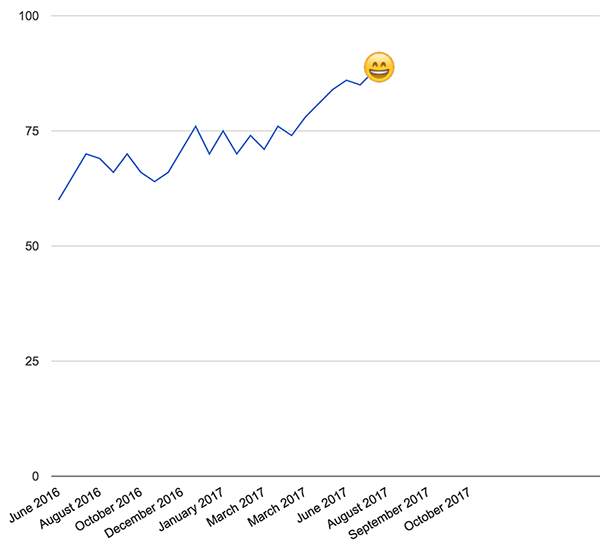
Current morale trend: to infinity and beyond!
THERE. ARE. SO. MANY. BUGS. I mean, I’ve been making web games before, and I’m pretty familiar with the slow, painful process of game debugging/polishing, but still – this is another level. Messages not showing, notifications not working, images suddenly going black, odd glitches we’re unable to reproduce… It’s coming down hard! And that’s not to mention all the possible remaining scripting errors. When you’ve got a 110k words script, with 2165 possible choices, there are MANY occasions for things to go wrong. Multiply that by 5 languages, and you’ll get why, at some point, I feel like crawling under my desk and never get out again.
~morale = morale-6
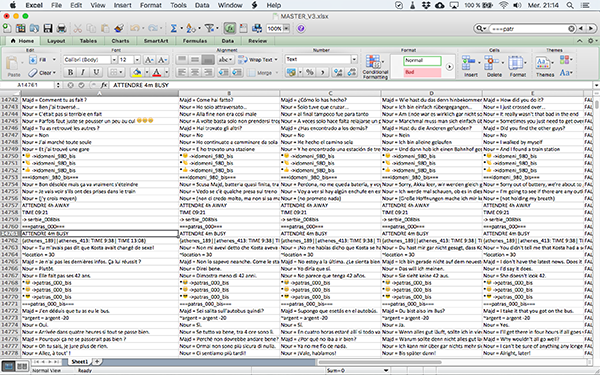
110k words in 5 languages makes for a HUGE spreadsheet.
Ok, time to go on holidays. Is the game out yet? No. Is it going to prevent me from spending some well-deserved time off with my beloved family? Of course not!
Well… that’s a nice thing to say, but as a matter of fact, I spend pretty much every vacation day working. Yes, it’s only small chunks here and there, but that’s maybe eve worse: I’m with my loved ones physically, but not really available mentally.
In general, I’ve noticed that in the past few months, I’ve been far less patient as a father, and less available as a partner. Sleep deprivation and endless to-do list have clearly damaged my ability to be patient and attentive. That’s not a huge deal, and my two daughters and my significant other are very supportive, but that annoys me that they have to pay a price for me doing this game.
As we’re supposed to be out mid-September, I assuage this trouble by telling myself the end of the project is near.
Except it’s not.
~morale = morale-3
Around august 10, our developer, Paul, tells me he’s in the hospital. The details are obviously private, but it’s looking serious enough for him to be prescribed with a 1-month sick leave. He’ll officially be away until September 15. I worry about this, of course. Paul is a good friend and I want him to be OK. But he’s pretty reassuring: there’s no way for this to stop him from working on a project he loves! I tell him to take all the time he needs. As I’m the optimistic type, I’m confident he’ll be better soon with a few weeks’ rest. Still, this is a shocker.
Regarding the game – well, there’s no rush, of course. We’re close to the goal, and we’ll release a week or two later than scheduled if we have to.
~morale = morale-7
The end of August comes with great news. Bury me, my Love has been picked to be part of IndieCade US’s official selection! This is great on so many levels. First, it’s an honor because IndieCade is a festival I’ve been following for years, and I’ve discovered some of the games I care the most about thanks to those selections in the past. Then, BMML’s our first game, so even if we don’t win (spoiler: we won’t), being part of the selection already is an honor for us. And last but not least, this’ll probably be a great opportunity to meet other indie devs from around the world… in Los Angeles, of all places!
~morale = morale+4
Paul isn’t getting better. In fact, there’s no way to know when he’s going to be back on his feet. He’s obviously in need of a VERY serious time off, without any source of worry or pressure, and each time I bug him with questions related to the game, I feel I add to his stress level. If we were two dudes in a basement, I would simply put the whole project on hold until further notice – but there’s a lot of people involved, and we just can’t do that.
So I come to terms with the idea that I have to find someone to replace him. It’s heart breaking because we’ve been working together on this almost since Day One. I know I’m going to miss him a whole damn lot.
Now, remember when I was bragging about going full open source, and how cool it was? Well, that’s before I had to find a developer who knows how to use MonoGame, 6 weeks away from the day we were supposed to release a game…
~morale = morale-20
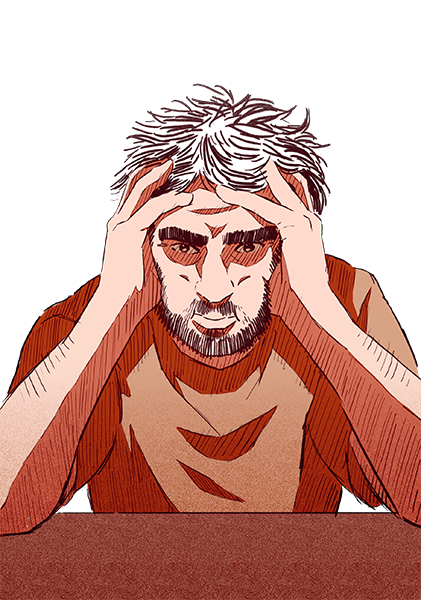
…but hey, cool things happen too, sometimes. As I already mentioned, I’ve joined a French indie game devs community earlier this year, and met lots of nice peeps there. Among them is Thomas, a lovely gentleman who
is probably the best French MonoGame dev there is
just happens to be available for the weeks to come
In retrospect, I fully realize how unbelievably lucky we’ve been to find him. Without him, there simply would be no Bury me, my Love, period. But at the time, still stunned by Paul’s misfortune, I just think “Well, this is nice”.
~morale = morale+3
Luckily enough, Paul commented his code pretty well, which is something you should ALWAYS do – but don’t always do, especially when you don’t think you’ll ever have to collaborate with someone on a project. In a few days, Thomas is able to understand how the game works and start working on fixing bugs. The first thing he does is to update MonoGame to a more recent version, which fixes a lot of small issues and instabilities we had.
But there actually was a reason why Paul did not update MG – a reason Thomas and I don’t know about. The thing is, the selfies and pics Nour and Majd send each other in the game are pretty big files – they have to be, in order to fit high-end smartphones screen resolutions. Such images are quite heavy, and we have next to a hundred of them. For a few months, Paul and I have been careful for the game’s builds not to be over 100MB, because if you go over this limit, things get more complicated – I’ll elaborate on that soon. We were very close to this limit, but we had a backup plan. At worst, we thought, we’ll use .jpgs instead of .pngs.
But in MonoGame’s latest version, you’re not allowed to use images in external formats anymore. They have to be converted to textures, and this changes everything. Suddenly, the games builds jump from around 90MB to over 180MB. When Thomas and I notice that, he puts a lot of work – and time – in optimizing everything to lose as much weight as possible. But after a couple weeks, we realize we won’t be able to go under the 100MB bar again.
This is no big deal for the iOS version, though – worst case scenario, Apple users will be forced to have an available Wi-Fi connection to download the game. Not ideal, but still manageable. On Android, though, things go sour. In order to be available on Google Play, every game above 100MB needs to be split in one .apk file plus one .obb extension. This is no rocket science per se, but that’s another (big) bullet point on our todo list. And we’re on a tight schedule: after a discussion with our partners at ARTE, Figs and Playdius, Bury me, my Love’s release date has been set to October, the 26th.
~morale = morale-6
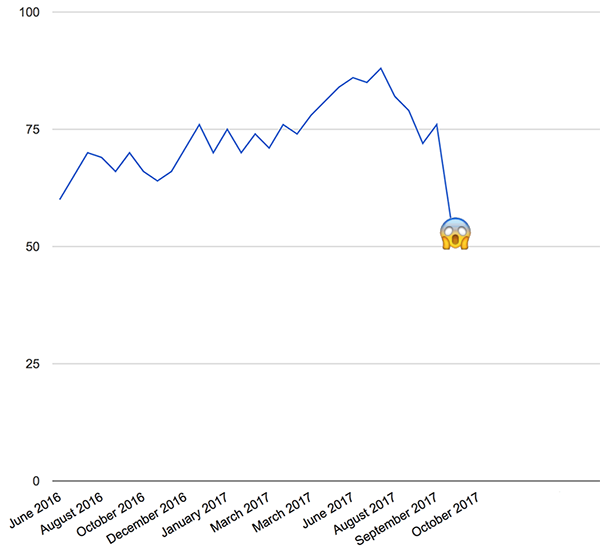
Well, Steve, I recognize a crisis when I see one... MORALE DOWN!!!
We have a stable, fine looking version of the game running, and a couple days ago, we submitted it to Apple – a month before the release date, as it should be. Now, I’m at the airport, ready to take off for Los Angeles and show our work at IndieCade US. I’m all pumped up, and even security check seems fun. But as I’m waiting to hop on the plane, I get an email from Playdius.
“Apple has rejected the game.”
~morale = morale-15
As I’m flying across the ocean, I’m reviewing the reasons for the rejection. It seems to contravene the guideline 4.2, about “Minimum Functionality”. Isn’t Bury me, my Love enough of a game? Surely that can’t be: we’re selected in videogames festivals, we’ve got 19 different endings with thousands of options for the player to choose from… And other text-heavy interactive stories are published on the App Store every day! In a word, I’m completely puzzled – and a little bit depressed.
During the time I’m in LA, the team in Paris builds a detailed presentation of BMML’s functionalities. Gameplay videos, narrative maps, branching and consequences… everything is explained with lots of details. The game is submitted again… and again, it is rejected. Now, I start wondering: could the game’s content be the issue here? Could it be problematic that our game is directly inspired by real events? If so, we’re busted, because there’s no way we could possibly change that – Bury me, my Love would lose all its meaning in the process.
In the meantime, I get lots of super positive feedback at the festival. That makes me feel a bit better, and I even come to thinking that, should we get an award, it might help our case. Sadly, we don’t win any prize, and it’s time for me to fly back home.
~morale = morale-6
But a discussion I had with a gamedev friend stuck with me. Armel Gibson is incredibly talented, and his game, Vignettes, has been featured by Apple earlier this year. “Maybe”, he tells me after trying out BMML, “you should have more interaction earlier in the game. It’s quite a long introduction you’ve got there, and there are many of moments where you just watch Nour and Majd talking to each other. Maybe you should consider changing that”.
I’m not sure he’s right, but we’re out of options anyways. And making a mobile-only game already is risky enough – not having an iOS version of it would be fatal. So I spend the entire flight back modifying the game’s script to add more choices, and when we land, I use my cell phone to send the new version to Thomas. He builds. We submit to Apple. And I can’t stress enough how important it is to have other gamedevs around to provide you with fresh feedback on your work, because the submission is accepted!
Thanks Armel <3
~morale = morale+8
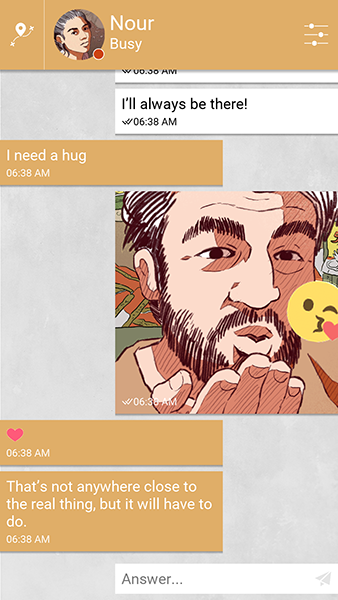
Ok. It’s now October, 25th, and tomorrow is the big day. We’re all set and good to go. But in the afternoon, I get a message through the game Facebook page. It’s from someone who heard about the game in the press. “I know it’s only supposed to be out tomorrow”, he tells me, “but I just can’t wait so I went on Google Play today, and as I noticed the game’s page was already live, I bought it. The problem is, it’s not working. I suppose it’s because I’m one day early, but I figured I’d just ask you about it…”
The Google Play page is indeed already published because we don’t want to have to deal with delays in publishing tomorrow. But no, there’s absolutely no reason why the game wouldn’t work.
So I check with my three test phones, and it works just fine. But then, I borrow a coworker’s phone… and it doesn’t. A few other tests later, I must face the awful truth: our game’s Android version won’t work on A LOT of different Android devices.
~morale = morale-10
We’ve got an emergency chat with Thomas and try to understand where the issue comes from. In parallel, I keep Paul updated on the situation, and after a couple minutes, he finds out what happens. It’s the notorious .obb file that’s the root of all evil. It’s properly downloaded from the store, but after that, there’s a permission issue that impedes the .apk file from finding it on the device. Proof is, restarting the phone fixes the problem. This isn’t looking that bad after all. I go to bed around 1AM, with Thomas reasonably confident: he’s going to spend the night on it but he thinks he’ll be able to patch the issue.
~morale = morale+2
Here we are, October 26th. The game is supposed to be out today, and our PR agencies have scheduled a press release for around 3PM Paris time. Meanwhile, we still don’t have a working Android version. Around 11AM, Thomas finally builds a new .apk + .obb. We upload it on the store feverishly, and I try to install it from one of the concerned devices… It. Doesn’t. Work.
~morale = morale-5
But thanks to Paul, we know that restarting the phone allows for the game to launch properly. So we implement the crappiest patch: we swap the normal error message for one that asks players to reboot if they can read it. I’m feeling really bad about that, and I’m pretty sure we’re going to be buried under negative Google Play ratings because of how user unfriendly this is. But at least, it works. (The astonishing truth is that we will have a grand total of ZERO complaints about this between the launch date and the day we have a proper patch running, two weeks later).
~morale = morale+2
Then… here we are. WE ARE OUT. WE F***ING MADE IT. WE MADE A GAME.
~morale = morale+20

Around the time the press release is out, the first articles on the game start popping. I’m in the subway when I read the first one, a great piece by Stephanie Chan on Gamesbeat. And I almost break down in tears, in the middle of the crowded train. This feels so unreal, yet so good, to read someone share their thoughts about your game… And Stephanie completely got what we tried to do with Bury me, my Love. I think about Dana and about everyone in the team, and really, I’m super glad we made it.
~morale = morale+10
And a few hours later, to my deepest astonishment, we are featured by Apple. We’re on the App Store’s home page in several countries in Europe. This means the editorial team there liked the game, and this is very valuable to us. Plus, it’s also usually a very good thing sales wise… but to me, seeing Nour’s profile on a big banner is the most satisfying thing.
~morale = morale+5

After a few days, I slowly get more and more comfortable with the idea that people actually like our game. We won the Developer’s Prize at IndieCade Europe, which is such a great honor, especially as it comes from fellow gamedevs. We’ve got a lot of very positive press (heck, even France's Culture minister hears about it!), and most of the criticism we get is focused on small flaws, such as the inability for players to rewind the story to a previous save point (Definitely a feature. Not at all due to an instability we were unable to kill. Of course.). Dana is as excited as we are, and we exchange press links over WhatsApp.
Sadly, we also get hateful comments aimed at migrants and refugees, especially on social networks when Kotaku and Now This make videos about Bury me, my Love. But this actually has one main effect: it straightens my belief that yes, this story definitely is important, and yes, video games as a media do mater. If this game bothers assholes, then it’s definitely worth it.
Later in the month, we’re nominated for the Game Awards (!!!), and the biggest French videogames YouTuber makes a Let’s Play of the game (almost 4M views!!!!!) For our very first title as an independent studio, with little previous experience, I really don’t think we could have hoped for more.
~morale = morale+5
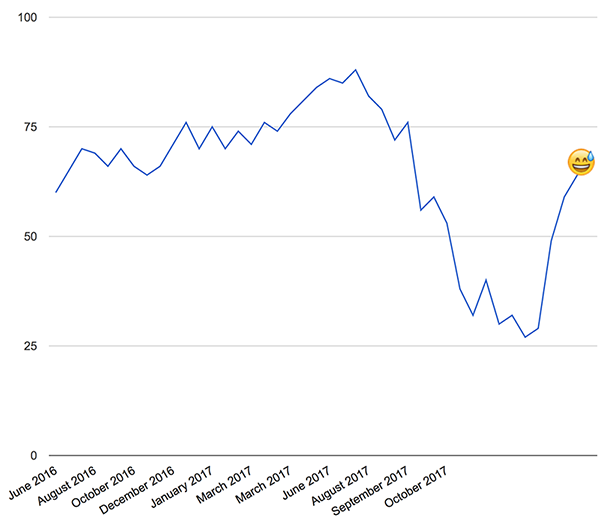
My final morale graph - this sure was a sweet ride!
So here we are, 18 months later. Bury me, my Love has sold respectably, although not as well as I’d hoped, but more importantly, a lot of people who played it seem to really have enjoyed it. Among them, some were putting their hands on a video game for the first time in their life. Others have reported that they have finished the game once and are not able to play it again because they want to keep this intense experience as is. Lots of people cried, like Dana’s sister did the first time she tried the prototype.
We’re still chatting with Dana from time to time. She aced her German language test and is now learning a job. I’m really happy for her that she seems to fit in her new life nicely.
There are far fewer Syrian migrants on the roads today than there were when we entered preproduction. But people are still drowning every day in the Mediterranean see. And for those who make it, the living conditions in the countries they arrive in are still often awful. I hope Bury me, my Love will help people think about this situation, and the solutions European citizens may have to end it. But who am I to tell?
As for me, I end this production with a grand total of 69 morale points – an undeniable betterment from my initial 60 points. I also feel like I’ve learned a whole lot as a gamedev. And today more than ever, I believe reality-inspired video games are a genre we’re only going to see more of. I, for one, have a couple new projects on the back of my mind. Hope I’ll have the opportunity to tell you all about them soon!
Bury me, my Love is available on iOS and Android. You can play a free prologue on the game’s website.
Read more about:
Featured BlogsYou May Also Like